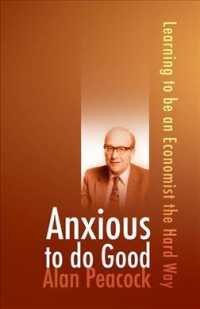- ホーム
- > 洋書
- > 英文書
- > Cinema / Film
Full Description
Narrative comprehension, memory, motion, depth perception, synesthesia, hallucination, and dreaming have long been objects of fascination for cognitive psychologists. They have also been among the most potent sources of creative inspiration for experimental filmmakers. Lessons in Perception melds film theory and cognitive science in a stimulating investigation of the work of iconic experimental artists such as Stan Brakhage, Robert Breer, Maya Deren, and Jordan Belson. In illustrating how avant-garde filmmakers draw from their own mental and perceptual capacities, author Paul Taberham offers a compelling account of how their works expand the spectator's range of aesthetic sensitivities and open creative vistas uncharted by commercial cinema.
Contents
List of Illustrations
Acknowledgements
Introduction
PART I: COGNITION
Chapter 1. The Specter of Narrative
Chapter 2. Ghost Films of the Avant-Garde
PART II: VISUAL PERCEPTION
Chapter 3. Bottom Up Processing, Entoptic Vision and the Innocent Eye in the Films of Stan Brakhage
Chapter 4. Robert Breer and the Dialectic of Eye and Camera
PART III: AUDIO-VISUAL PERCEPTION
Chapter 5. Synaesthetic Film Reconsidered
Chapter 6. Three Dimensions of Visual Music
Conclusion
Bibliography








